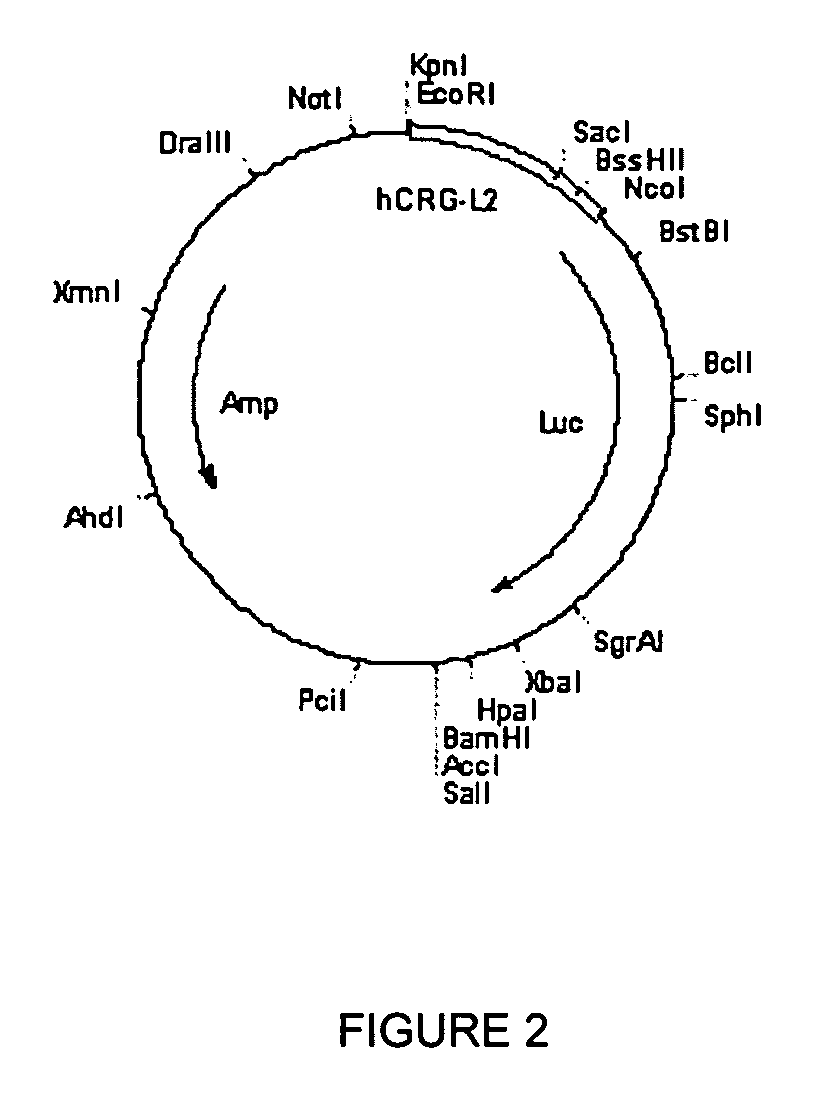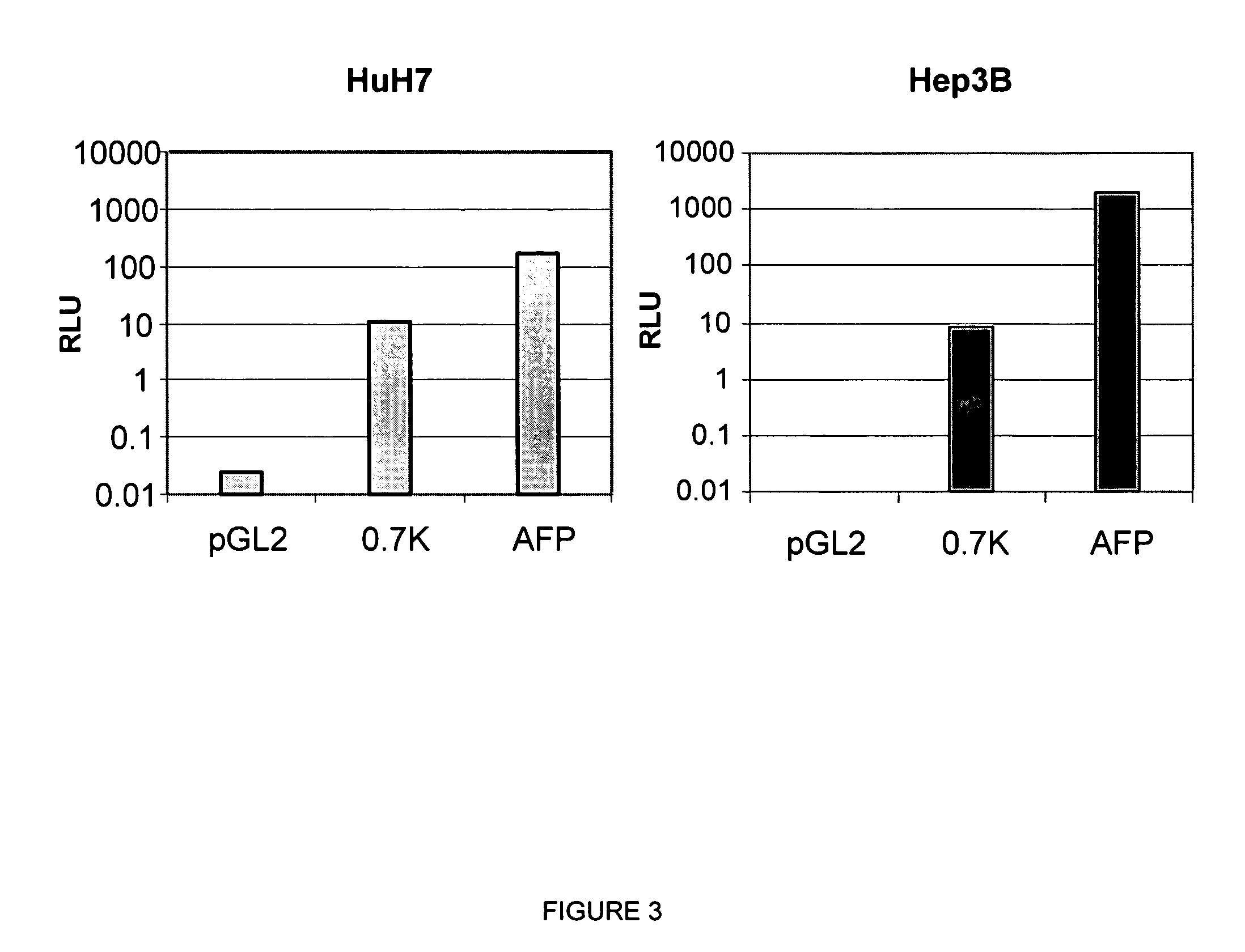Hepatocellular carcinoma specific promoter and uses thereof
a hepatocellular carcinoma and promoter technology, applied in the direction of dsdna viruses, fused cells, drug compositions, etc., can solve the problems of cancer mortality, affecting prognosis and survival, and ethnic subgroups in these populations may be at very high risk
- Summary
- Abstract
- Description
- Claims
- Application Information
AI Technical Summary
Benefits of technology
Problems solved by technology
Method used
Image
Examples
Embodiment Construction
[0021]The hepatocellular carcinoma-specific replication-competent adenovirus vectors of the invention comprise an adenovirus gene essential for replication, preferably an early gene, under the transcriptional control of a liver cancer-specific transcriptional regulatory element (TRE), preferably a CRG-L2 regulatory sequence. By providing one or more liver cancer-specific TREs, the adenovirus vectors effect selective replication and corresponding cytotoxicity in primary liver cancer cells.
[0022]The adenoviral vector comprising a liver cancer-specific TRE may further comprise one or more regulatory sequences, e.g. enhancers, promoters, transcription factor binding sites and the like, which may be derived from the same or different genes. The adenovirus vectors may comprise co-transcribed first and second genes under control of a liver cancer-specific TRE, wherein the second gene may be under translational control of an internal ribosome entry site (IRES). In some cases, the adenovirus...
PUM
| Property | Measurement | Unit |
|---|---|---|
| size | aaaaa | aaaaa |
| imaging | aaaaa | aaaaa |
| tumor shrinkage | aaaaa | aaaaa |
Abstract
Description
Claims
Application Information
 Login to View More
Login to View More - R&D
- Intellectual Property
- Life Sciences
- Materials
- Tech Scout
- Unparalleled Data Quality
- Higher Quality Content
- 60% Fewer Hallucinations
Browse by: Latest US Patents, China's latest patents, Technical Efficacy Thesaurus, Application Domain, Technology Topic, Popular Technical Reports.
© 2025 PatSnap. All rights reserved.Legal|Privacy policy|Modern Slavery Act Transparency Statement|Sitemap|About US| Contact US: help@patsnap.com



